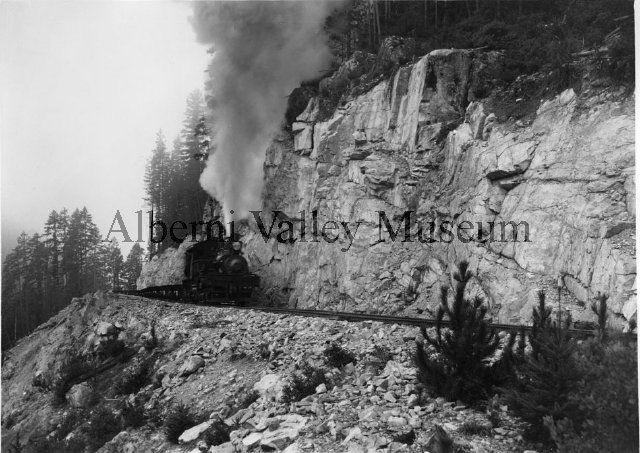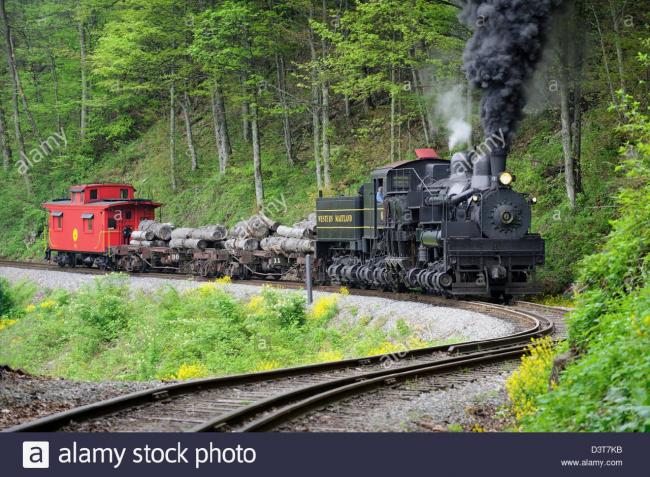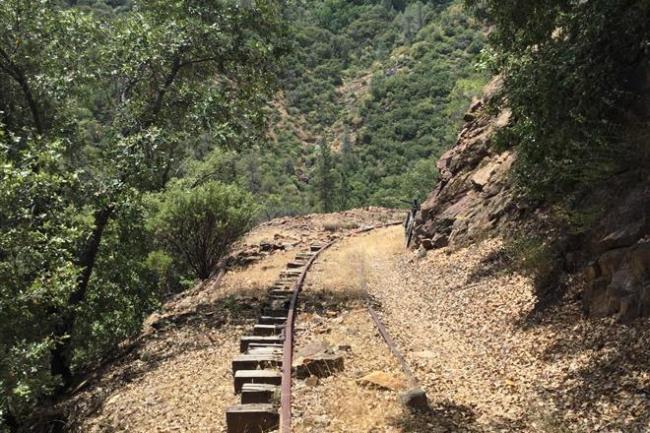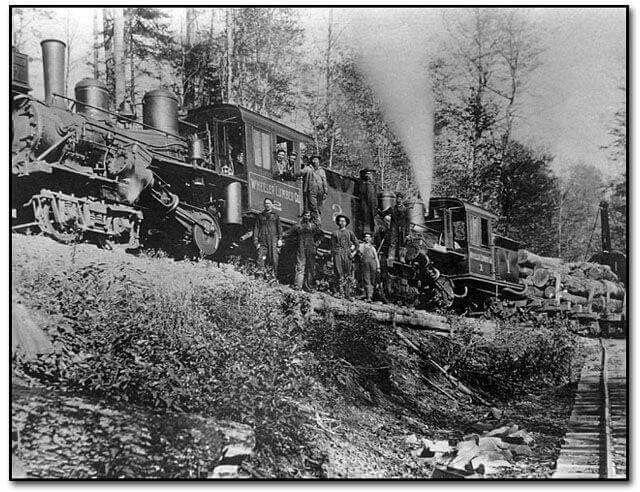Howdy, Stranger!
It looks like you're new here. If you want to get involved, click one of these buttons!
Categories
- 996 All Categories
- 3 Picture Posting and Resizing
- 58 New Member Introductions
- 120 Off-Topic Forum
- 4 Photography
- 2 Resources
- 18 New Product Information
- 170 The SierraWest Forum
- 10 Brett's Blog
- 121 General News & Ramblings
- 3 Re-Release Information
- 6 Q & A about SierraWest
- 9 What Would You Like to See?
- 408 Builds
- 145 HO Scale Builds
- 180 O Scale Builds
- 62 Finished SW Build Pics
- 15 Miscellaneous Builds
- 195 Techniques
- 19 Working with Wood
- 23 Painting Castings
- 5 Masonry
- 23 Scenery
- 37 Tools and Supplies
- 22 Layout Planning & Building
- 40 Miscellaneous
- 24 Prototype Information
- 22 Reference and Research
Logging disconnects (Into the Woods)
The next project on my bench will be the logging disconnects...I reserve the right to put this project on hold when the truck repair shop arrives. I have a set of 3 and would like to make an empty logging train headed into the woods. There will be a number of components to the log train besides the disconnects including: a CHB Dolbeer donkey, a locomotive conversion kit, a flat car, and a scratchbuilt work caboose. I will definitely post the build of the disconnects. If Brett says it's OK to post the other builds here then I will. This is after all a SWSM forum.
I'll be placing the train in a shadow box diorama. Right now I'm thinking that it will be 6"-8" deep, 12" tall, and 24"-36" long. Mountainous scenery is a must, but the location is up in the air right now. I believe the track should have a curve in it, but I don't know if there is enough room for something like an "S" curve. I think a nice gradual curve bending around a rock outcrop should work nice. The curve should be closest to the viewer in the middle of the box. This way some view blocks can be placed in front of the track at each end.
I have found some reference photos and would encourage anyone to post more on this thread if you think the scene might look good. Pic 1 is a jagged rocky scene. Appropriate for the Sierra Nevada's but not quite the look I'm going for. Pic 2 is more of a lush green like you might see in the Appalachian's. I like it but still want some rocks. The 3rd pic is close to what I am thinking right now with a mix of rocks and greenery. I love pic 4 with the switchback, but I think that might be a bit ambitious for such a shallow diorama. But check out the crib work on the upper track right where the guys are standing. That can definitely go into my planning.
Always open to thoughts, ideas, suggestions, etc.



I'll be placing the train in a shadow box diorama. Right now I'm thinking that it will be 6"-8" deep, 12" tall, and 24"-36" long. Mountainous scenery is a must, but the location is up in the air right now. I believe the track should have a curve in it, but I don't know if there is enough room for something like an "S" curve. I think a nice gradual curve bending around a rock outcrop should work nice. The curve should be closest to the viewer in the middle of the box. This way some view blocks can be placed in front of the track at each end.
I have found some reference photos and would encourage anyone to post more on this thread if you think the scene might look good. Pic 1 is a jagged rocky scene. Appropriate for the Sierra Nevada's but not quite the look I'm going for. Pic 2 is more of a lush green like you might see in the Appalachian's. I like it but still want some rocks. The 3rd pic is close to what I am thinking right now with a mix of rocks and greenery. I love pic 4 with the switchback, but I think that might be a bit ambitious for such a shallow diorama. But check out the crib work on the upper track right where the guys are standing. That can definitely go into my planning.
Always open to thoughts, ideas, suggestions, etc.





Comments
Terry
Terry, the photo you mentioned is the one that spoke to me also. I believe that will be the look I go for.
thanks Carl for the photos. That looks like a very unstable load. Love the spindly bridge.
Bryan
Also, something unexpected happened while adding some knot holes to the deck planks. I used some toothpicks that had been previously been used to paint castings and got this interesting ring coloring on my knot hole. I doubt if it will remain through the board coloring steps but though I would share in case others want to try it. I'm sure going to try to find ways to keep this look.
Knot holes look perfect, hope they retain the look...
Joel, that is a great idea. I tried that with OK results. Pic 1 shows your idea as the lower knot and an original knot above it. This will take some trial and error to figure out a reproducable solution.
I've given the base layer of color to the decking. The instruction manual suggests installing the deck then coloring the entire disconnect the same color. I wanted to tell a story of re-decked disconnects and made slight variations in the coloring and texture for each deck. Pic 2 shows the differences.
I also have a base coat of color on the resin pieces. I'm choosing not to use chalks to color these because I have found that chalk can hide some of the fine details and these castings are very detailed...including damage to the wood log bunk! I started with a light gray spray base followed by a dark brown enamel wash. I varied the wash by thinning some pieces more than others and by adding a dust color on top of the dark brown.
Once these are dry I will assemble and drybrush tan then gray to blend the colors together.
I found a cool reference pic of a disconnect that looks a lot like the ones I am building. What's cool about it is the debris that has accumulated on the deck, and if you look close, you can see lettering on the cross arm. I believe they added a steel log bunk. Which got me thinking.....
I'm going to need view blocks on each end of the diorama to hide the track coming to an abrupt end. And since we are going into the woods, we will need some woods. I've always wanted to try my hand at a wire frame tree so here we go.
I took some 24g florist wire and cut 12 pieces about 40" long. Fold the bunch in half then in half again. Put a twist in the bottom. This will be the roots. For this tree I inserted a 1.5" plastic tube about 1/8" thick to bulk up the trunk at the soil line. Start twisting and form the basic trunk and branch structures. Some of the tutorials I've seen says to cut off the long tips of these wires to form the basic structure of the branch (pic 2, red arrow). I would like some finer definition on my branch tips. So I looped the long wire back on itself and twisted it together...3 twists minimum to hold it in place (pic 3). Then fold the look back on itself kind of like tying your shoe (pic 4). Twist these smaller loops. Once again at least 3 twists to hold in place. The red arror in pic 4 shows only 1 twist in this loop...this will fall apart in the next step. Cut the loops. You now have 4 branch tips where there was only 1 before.
Continue this process for the entire tree. Give it a few bends until it looks right. I think this tree got a bit too tall. Next time I will either cut the strands shorter or add more strands to get more branches going up the trunk. The tree is 7.5" tall in the last pic. The whole process is pretty quick up to this point. I'd say less than an hour per tree.
That's all on trees for now...the paint on the disconnects is dry.
The bunks are just sitting on there right now. Check out the detail on the wood bunk. That's a casting. I didn't do any of the wood texture.
Right now the coupler pockets have been added (epoxy drying now) and the wheelsets are primed with a first coat of weathering that is also drying.
Thanks Brett. I'm loving these little kits.
I have the first pair that was able to be connected. I have some clean up work to do on the underneath like touching up with paint. Then I'll add the brakes. At that point flip it over and add the deck hardware and bunks.
Also, excellent tree armature tutorial...can't wait to see how they turn out...keep going with how you finish them up.
Terry
The disconnects are at a stopping point. All assembled and mostly weathered. I may add a few more details and bits of wear and tear after the entire train is put together. This string of cars ended up at about 20" long which was about 2" longer than I had accounted for. The photo over the bridge gives an idea of the length. The diorama grows! Next up will be a 20' flatcar that will serve to carry the Dolbeer into the woods.
I think the work caboose on the end should have a sawfiler scene on it. I put this piece together to see what I thought about it. Kind of like the way it's turning out.
I'm in for another set of disconnects. These were a real pleasure to build. I could also use a Blacksmith car if anyone has one they would be willing to part with.
Terry
Yes they are On3/On30 depending upon the wheelsets you install.
This has been a fun build to follow. Great photos accompanied by good explanations as always. It also appears as others would like to build some of these little gems and that Brett will offer the kits again. Both you and Ken are amazing craftsman with a strong artistic and creative streak not to mention superlative teachers, [See it. Say it. Do it.]
Looking at the scene where you feature the logging disconnects on a wood trestle gave me flashbacks to the iconic scenery of John Allen featured in MR several decades ago.
http://www.craftsmankituniversity.com/vanforum/uploads/imageupload/922/FK2F7BG6V09E.jpg
The tree tutorial was quite unexpected but refreshing and timely for all of us waiting to add unique trees to a diorama. I'll be making a trip to the craft store for some wire as soon as the Christmas season winds down and all the family has gone back east. Looking forward to the completion of this tree project and your accompanying photos and explanations for additional items I'll need to buy for the project.
In this photo above you appear to be making a stand for a tree saw to be sharpened. Is that what you have in progress? Another wonderful and creative detail. Will the completed scene have accompanying LP?
LP?
Thanks, Dave S. Tucson, AZ